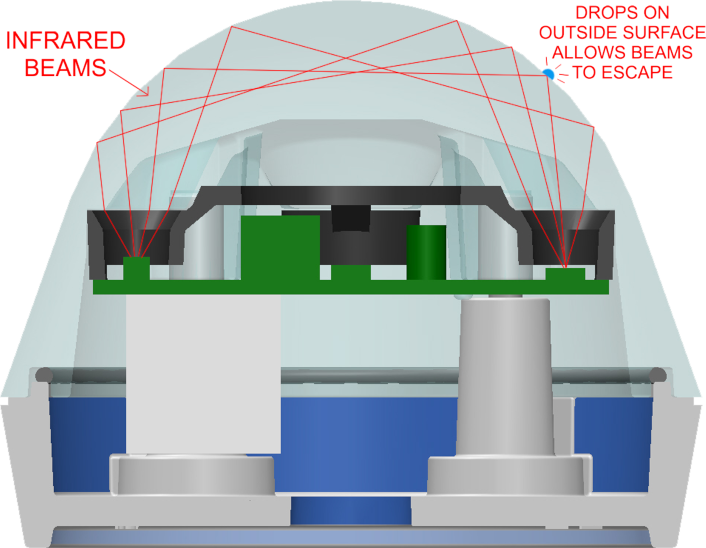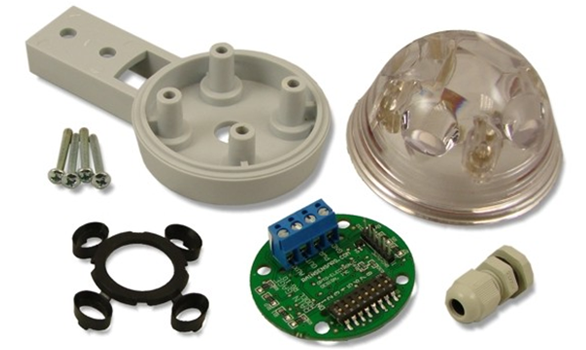
The patented Rain Gauge optical design keeps the beams inside the sensor, away from the influences of falling leaves and spiderwebs.
Hydreon Optical Solid State Rain Sensors generate infrared light that is directed within the lens to detectors.
When water drops hit the outside surface of the lens, some of the infrared beams escape.
The sensor detects the change in beam intensity, and determines the size of the rain drop that caused the change.
The sophisticated circuitry and Digital Signal Processing detect tiny rain drops, while rejecting the effects of competing ambient light disturbances.
The sensor detects the lens surface condition, including that caused by dirt, contaminants, aging, and other factors.
It properly compensates for these factors, making the device virtually impervious to environmental factors.
Hardware and sophisticated software gathers information from individual raindrops and implements a proper control strategy for the selected mode.
The system can detect individual drops of under half a millimeter in diameter.
Depending on the model, the algorithm can register accumulations of just one ten-thousands of an inch– a hundred times more sensitive than a typical tipping bucket. The sensor borrows technology that was developed over many years for automotive rain sensing windshield wiper controls.
We are able to offer these sensors at such a righteous price because the development was largely paid for through our research in the automotive field.
Refer to the Model Comparison page for the features and specifications for all models. Each Model Page has a description and link to the instructions/user guide and information about how it operates.
But don’t worry about the complexity of the Optical Solid State Rain Sensors. Think of them as a functional block that detects and communicates the rain sensing function for you– reliably, low maintenance, and at a low cost.
The perfect Rain Sensor for your application.

Most of the complexity of the RG-11, RG-9 and RG-15 is in the software and injection-molded optics. Sophisticated, but relatively inexpensive to produce.
